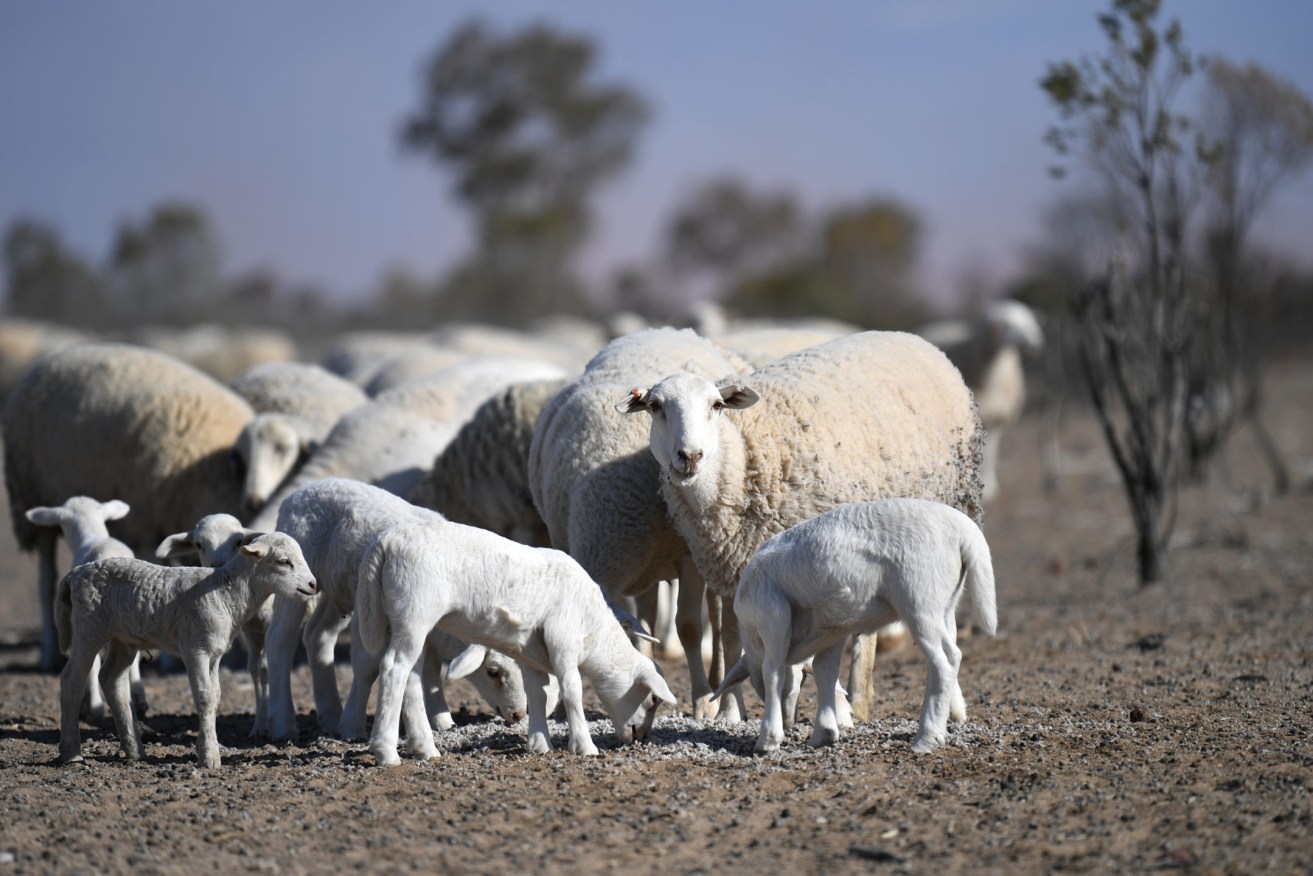Good for crops, but La Nina has turned our sheep into sitting ducks
Rain is great for the grass, but not so flash for the rear ends of sheep.


Warm, moist weather conditions caused by La Nina are putting Queensland sheep at risk. (Photo: AAP Image/Dan Peled)
Persistent hot and sticky weather is about to get even more icky for the state’s sheep flock as swarms of hatching flies get ready to strike.
Sheep and wool producers across the state are being urged to look out for flystrike, caused when flies, particularly the blowfly variety, infest the wet wool and skin of sheep, causing infection that ultimately leads to suffering and death if not treated.
Significant losses due to flystrike occur every year in Australia, costing the sheep industry $173 million and increasing animal health and welfare risks.
The Bureau of Meteorology’s climate outlook shows rainfall is likely to be above median for parts of northern and eastern Australia from February to April.
Maximum temperatures are likely to be above median in most of the country during this time.
Department of Agriculture and Fisheries extension officer Louise Moore said La Niña-induced wet conditions and hot temperatures were the perfect storm of conditions for flystrike.
“It’s important that producers remain vigilant in the coming months, monitoring for flystrike and ensuring they are prepared to deal with an outbreak on farm,” Moore said.
“During high fly periods, chemical availability and supplies may be low. We are urging Queensland producers to continually review their risk mitigation strategies and ensure they have sufficient chemicals on hand to meet their needs.”
With labour shortages currently being felt right across the farm sector, Moore said farmers need to it minimise time and costs spent monitoring and treating affected animals.
The most effective way to do this, she said, was by utilising the industry’s technical tools, such as FlyBoss, which helps farmers choose the right chemical for flystrike prevention and and develop additional management strategies.
“Producers should also assess their shearing and crutching dates. Planning shearing and crutching to coincide before the start of the fly season is an effective management tool for controlling flystrike,” she said.
“With temperatures likely to be above average over the remainder of summer and high moisture about, fly traps can also help monitor blowfly numbers and identify periods of high strike risk.”
As Queensland moves through predicted climatic conditions, understanding where flystrike risk can be mitigated can drive significant savings to operations.
“There are several tools like the FlyBoss Flystrike Risk Simulator that can help producers compare the effectiveness of different management options in their region,” Moore said.
“Although every La Niña event is different, while conditions for flystrike remain favourable, prevention and monitoring tactics need to remain top of mind for producers.
“Prevention is far more cost effective than treatment, mitigating significant productivity losses from struck sheep.”









